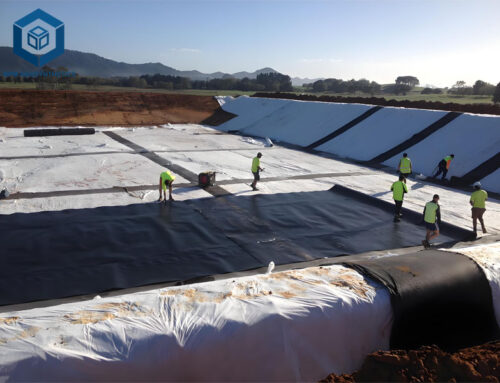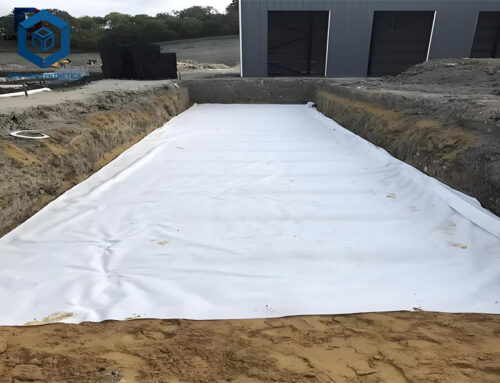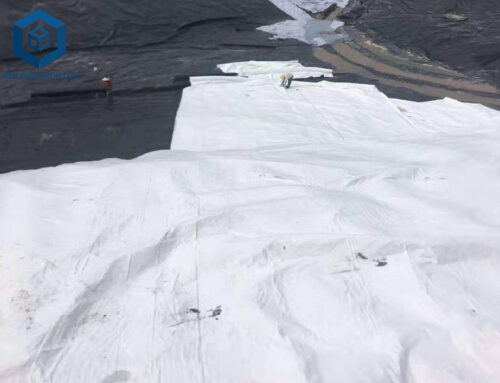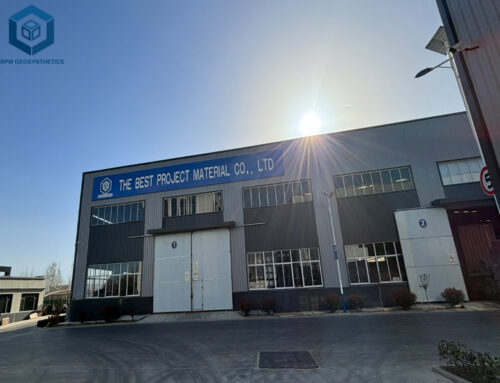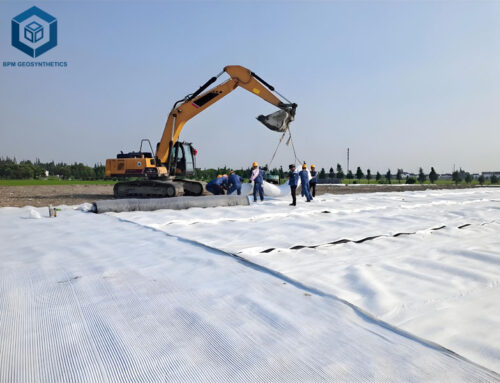Geotextile filter fabrics are an essential component of many civil engineering and construction projects, yet they are often overlooked beneath the surface. These versatile textiles play a vital role in applications ranging from road construction to erosion control and environmental protection. In this article, we’ll take an in-depth look at what geotextile fabrics are, its many applications, and the benefits it brings to these projects.BPM Geotextile hopes to become your partner for long-term win-win situation.
1. What Is Geotextile Filter Fabric?
Geotextile filter fabrics are specially designed geosynthetics used to separate, filter, reinforce, protect or drain soil. Made from synthetic fibers such as polypropylene or polyester, they are permeable and allow water to flow through while retaining soil particles. This property makes them essential in a variety of engineering and construction applications.
1.1 What Are Raw Materials And Types Of Synthetic Fiber Geotextiles?
Synthetic fibers used as raw materials for Geotextile filter fabrics are usually polyamide, polyester, polyethylene, and polypropylene. Polypropylene is the oldest synthetic fiber, discovered in 1931. Many nonwovens are made from synthetic fibers using the “needle punching” process shown in the figure below.
-
Polyamide (PA):
Polyamides are further divided into two types – nylon 6 and nylon 6.6, but they are rarely used in geotextiles. The first polyamide (nylon 6) is an aliphatic polyamide that is polymerized from the petroleum derivative caprolactam. The second polyamide is polymerized from adipate and hexamethylenediamine. They are produced in a linear form and then cut into small pellets. The resulting product is generally stronger but has a lower modulus than polyester and polypropylene. They are also susceptible to hydrolysis.
-
Polyester (PSF):
It is polymerized from ethylene glycol with terephthalic acid or dimethyl terephthalate. The resulting product has a higher strength modulus, leakage resistance, and general chemical inertness, making it ideal for use in geotextiles. However, it is affected by polar solvents such as phenol, benzyl alcohol and m-cresol and has a service life of up to 50 years at pH values between 7 and 10. This geotextile material has a very high resistance to UV radiation. However, care should be taken during installation to prevent unnecessary exposure to UV rays.
-
Polyethylene (PE):
It can be made in crystalline form, which is an essential property of any fiber-forming polymer. The three main types of polyethylene are low-density (LDPE), linear low-density (LLDPE) and the very common high-density (HDPE). HDPE is also used in many root barriers or bamboo barriers.
-
Polypropylene (PP):
A crystalline thermoplastic formed by the polymerization of propylene monomers under Zeigler-Natta catalysts.
1.2 What Are Characteristics Of Geotextile Filter Fabrics?
- Filtration: Allows water to pass through while retaining soil particles to prevent drainage system clogging.
- Separation: Acts as a barrier between soil layers, maintaining soil structure by preventing mixing.
- Strength and durability: Made of high-quality synthetic fibers with high tensile strength, UV resistance and resistance to chemical degradation.
- Permeability: Excellent drainage capacity allows water to flow efficiently while stabilizing the soil.
- Flexibility: Suitable for a variety of surfaces and irregular shapes, easy to install.
- Lightweight: Simplifies transportation and handling compared to traditional materials.
- Environmental protection: Often made of recyclable materials, can be recycled and reused, supporting sustainable practices.
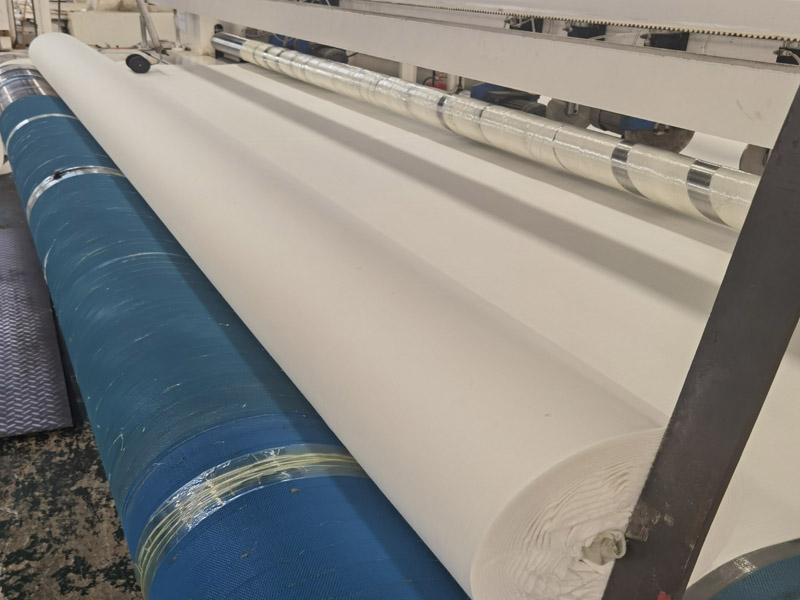
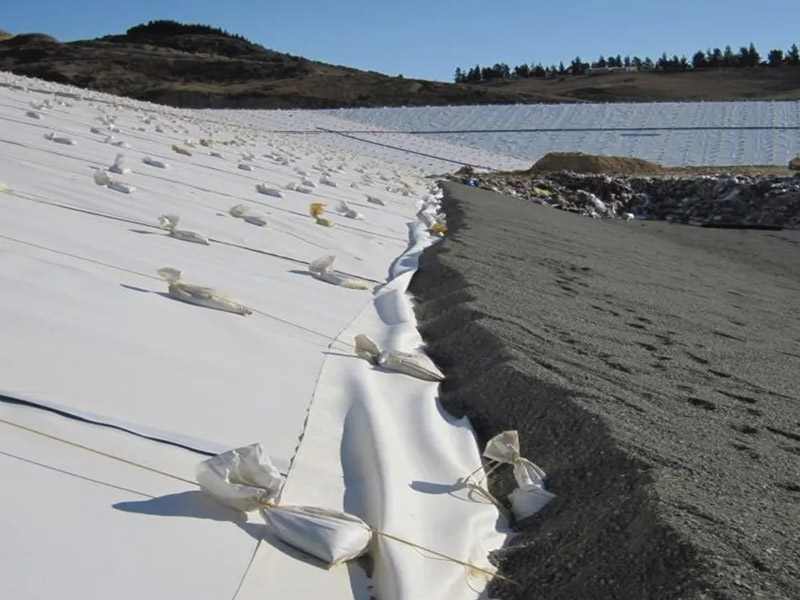
2. What projects can Geotextile filter fabrics be used?
Geotextile filter fabrics are versatile and can be used in a variety of applications that highlight their effectiveness in improving soil stability, managing water flow and enhancing overall project performance.
2.1 Geotextile Filter Fabric – Drainage system:
Geotextile filter fabric is essential in drainage applications. It allows water to pass through while retaining soil particles, thus preventing clogging of the drainage system. These fabrics are used in underground drainage systems, blind ditches, and even retaining walls to effectively manage water. Using geotextiles for infiltration is similar to stabilization. The main goal in both cases is to allow water to pass through the cover. The goal of this application is to remove water while preventing soil or any other fine particles from passing through. This is achieved by combining with a filter behind the geotextile. In this process, the water is removed instead of being filtered into a different material.
2.2 Geotextile Filter Fabric – Erosion Control:
Geotextile filter fabric are a valuable tool for erosion control. They are used to stabilize slopes and prevent soil erosion caused by water or wind. These fabrics can be used to reinforce embankments, coastlines and other vulnerable areas, preventing soil loss and protecting the environment.
2.3 Geotextile Filter Fabric – Road construction:
Geotextile filter fabrics are widely used in road construction projects. They are located between the roadbed and the base layer, acting as a barrier to prevent the mixing of soil and aggregate. This barrier helps maintain the integrity of the road structure, prevents the formation of rutting and potholes, and can enhance the stability and service life of the road.
2.4 Landfill:
Used in landfill liners and covers to manage leachate and prevent soil contamination.
2.5 Reinforcement
In reinforcement, geotextiles act as a source of strength rather than reinforcing the underlying layer like a stabilizing layer. The use of geotextiles as reinforcement materials is commonly found in the following areas:
- Steep slopes: Allows for steeper slopes and saves on required land surface and sealing materials
- Retaining Walls: In this application, retaining walls using geotextiles contain settlement more effectively than traditional building materials.Serves as a drainage layer behind the retaining wall, reducing hydrostatic pressure and preventing soil erosion.
- Control water erosion on bay coasts and seawalls.
- Land reclamation using hydraulic reclamation.
2.6 Gabion structure:
Geotextile filter fabric is used with gabions to enhance the stability and filtration capacity of retaining structures.
2.7 Agricultural Applications:
Geotextile filter fabric is used in drainage systems, irrigation management and as a protective layer for soil stabilization.
2.8 Geotechnical Engineering:
Geotextile filter fabric supports a variety of civil engineering projects, providing isolation, filtration and reinforcement.
2.9 Environmental Protection:
Geotextile filter fabric also play an important role in environmental protection. They can be used in landfill liners to contain hazardous materials, in wetland restoration to stabilize soil, and in shoreline protection to mitigate the effects of waves and currents.
3. How To Choose Right Geotextile Filter Fabric?
Choosing the right geotextile filter fabric involves considering several key factors to ensure it meets your specific project needs. Here’s a comprehensive guide to help you make an informed decision:
1. Type of Application
Identify the primary use of the geotextile filter fabric:
- Erosion Control: Used to prevent soil erosion on slopes and embankments.
- Drainage Systems: Helps in drainage applications such as roadways, railroads, and landfills.
- Reinforcement: Provides additional strength to soil structures like retaining walls and foundations.
- Separation: Prevent mixing of different soil layers or separating aggregate from subgrade.
- Filtration: Used in retaining walls, drainage systems, and around pipes to prevent soil migration.
2. Material Type
Geotextiles are made from synthetic polymers, primarily polypropylene (PP) and polyester (PET):
- Polypropylene (PP): Cost-effective, resistant to acids and alkalis, but less durable under UV exposure.
- Polyester (PET): More durable and UV-resistant, suitable for long-term projects but more expensive.
3. Weight and Thickness
The weight and thickness of the geotextile affect its strength and durability:
- Lightweight Fabrics: Typically used for separation and filtration (e.g., 150-300 g/m²).
- Heavyweight Fabrics: Suitable for reinforcement and erosion control (e.g., 400-800 g/m²).
4. Permeability
Ensure the fabric allows adequate water flow while preventing soil particles from passing through:
- High Permeability: Ideal for drainage applications.
- Low Permeability: Used where soil retention is crucial.
5. UV Resistance
If the fabric will be exposed to sunlight, choose one with UV stabilizers to prevent degradation:
- Polypropylene: Generally requires UV stabilization.
- Polyester: Naturally more UV-resistant but can benefit from additional stabilizers for prolonged exposure.
6. Mechanical Properties
Evaluate the fabric’s tensile strength, puncture resistance, and tear strength based on application demands:
- Tensile Strength: Ensures the fabric can withstand stretching forces.
- Puncture Resistance: Important for protecting against sharp objects.
- Tear Strength: Ensures durability under stress.
7. Environmental Conditions
Consider the environmental conditions where the geotextile will be installed:
- Chemical Exposure: Choose a fabric that resists the chemicals present in the environment.
- Temperature Extremes: Ensure the fabric can handle the temperature range of your project site.
- Biological Degradation: Some environments may require fabrics resistant to microbial degradation.
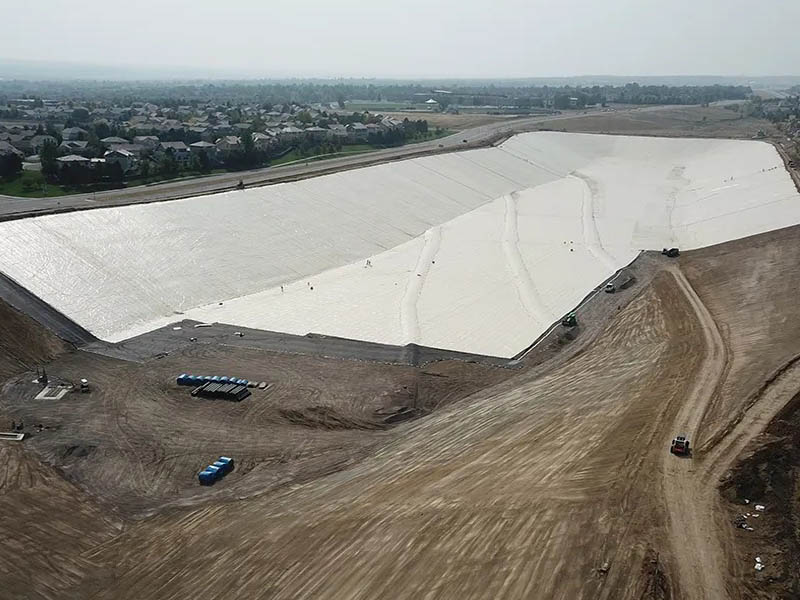
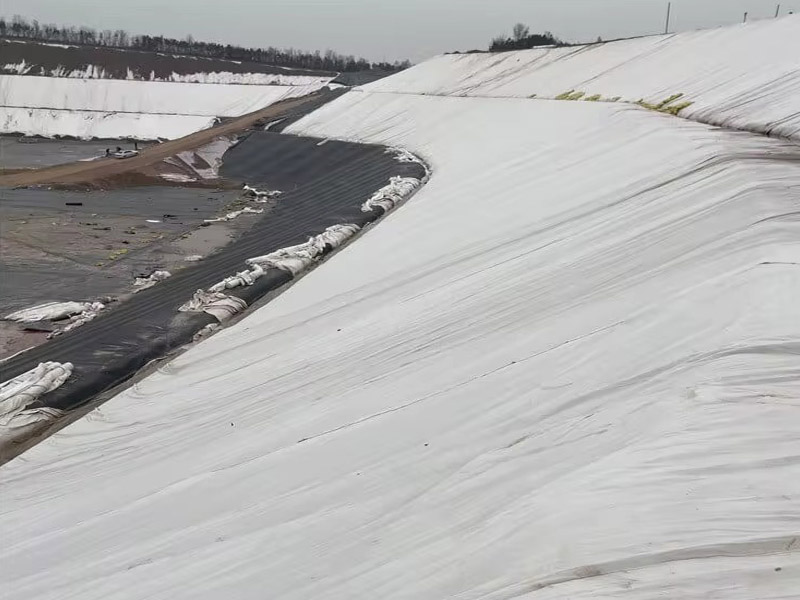
4. Summary
Geotextile filter fabric are a versatile and indispensable material in a variety of civil engineering and environmental projects. Their ability to filter, separate, reinforce, protect and drain makes them an essential component to ensure structural stability and longevity and protect the environment. As technology and materials continue to advance, Geotextile filter fabric remain a key factor in sustainable and efficient building and engineering practices.Hope to be your partner.

